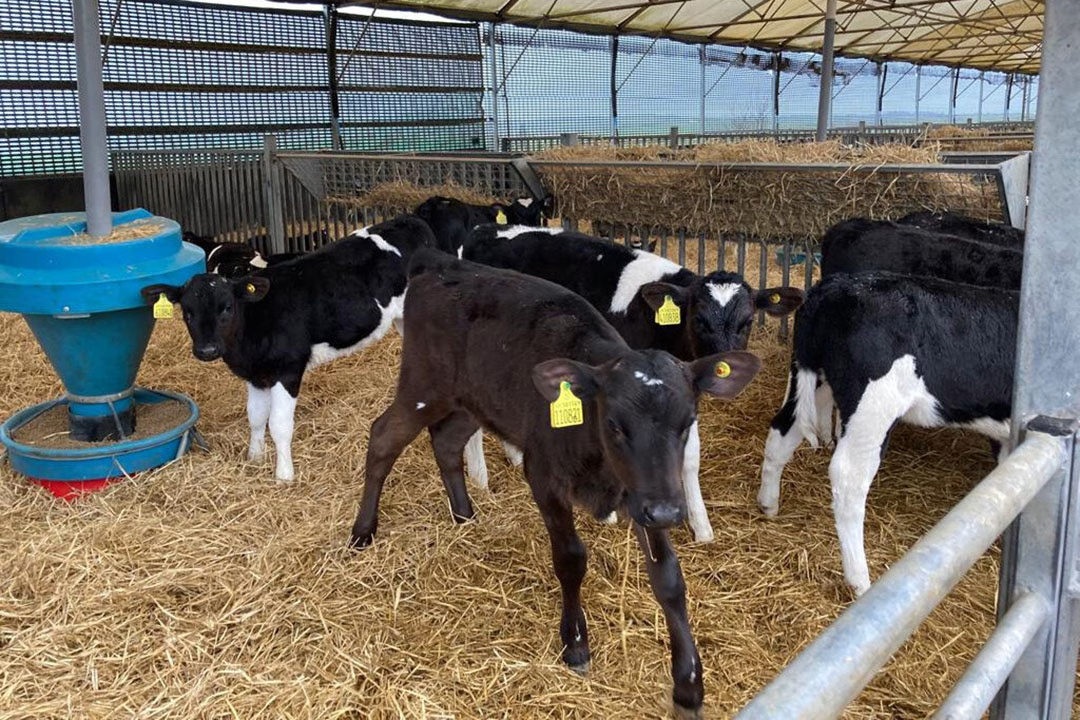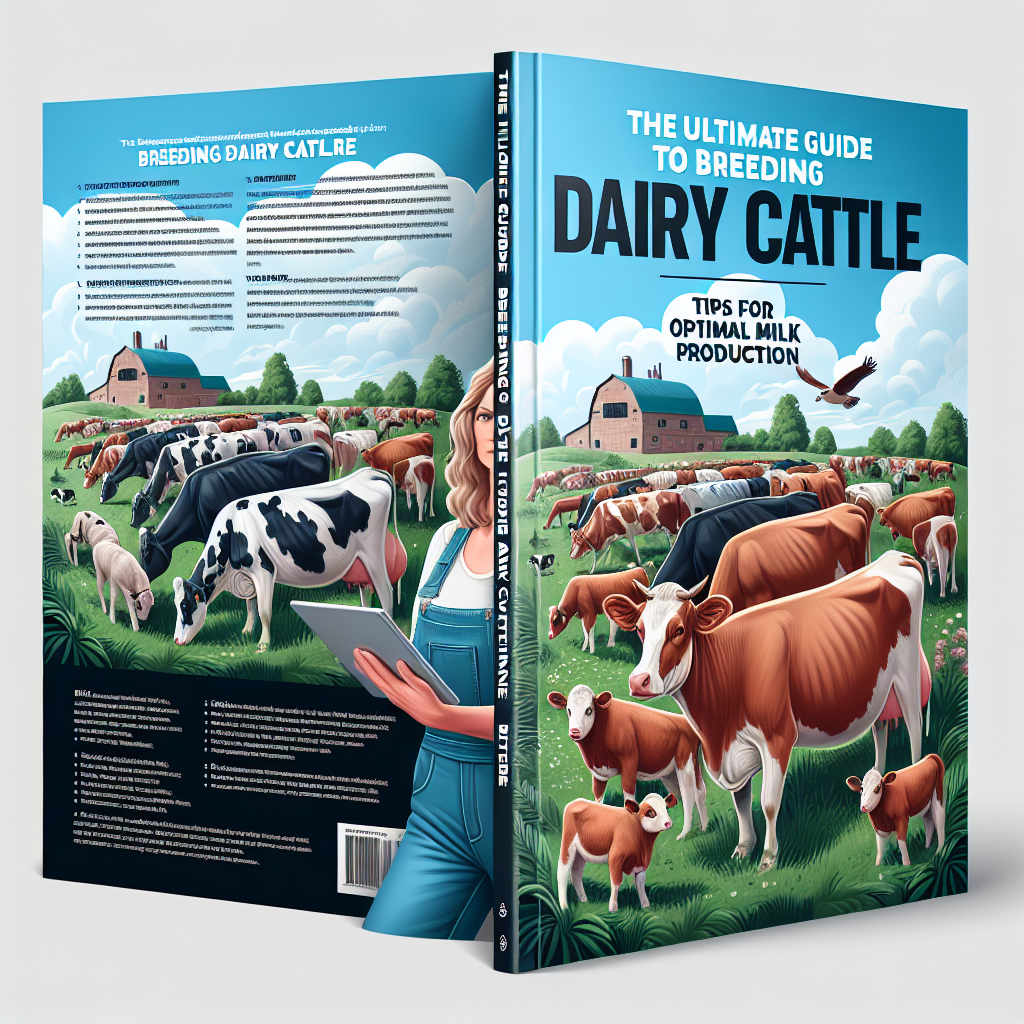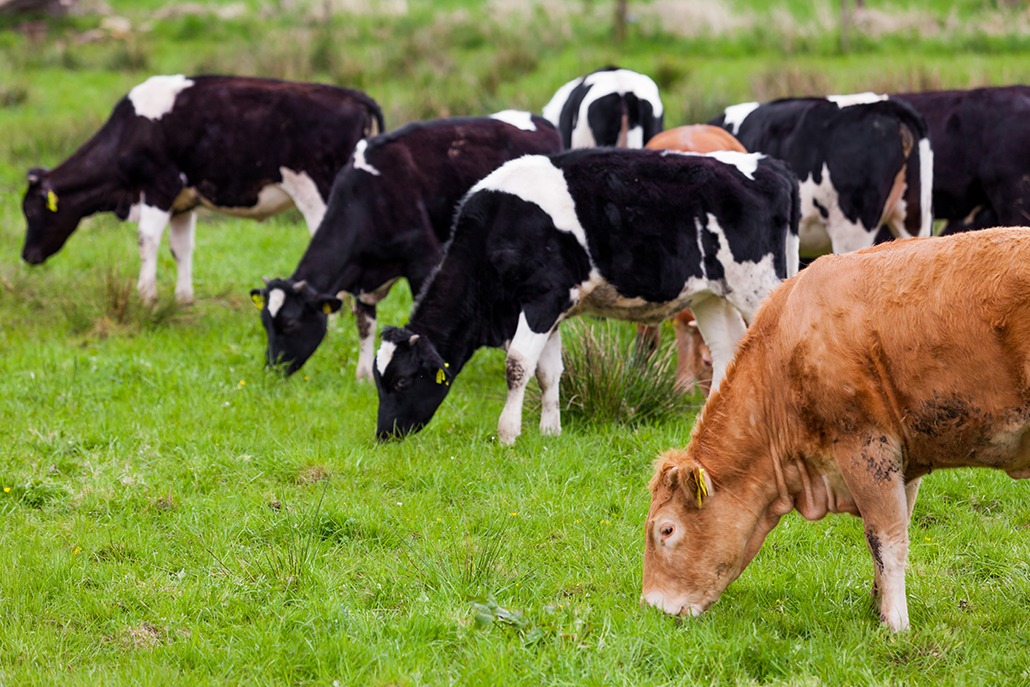Enhance calf welfare with expert insights in nutrition and management. Are your practices up to date for optimal growth?
Summary:
This article analyzes the European Food Safety Authority’s (EFSA) guidelines on calf welfare, focusing on fiber intake and calf separation to enhance well-being. The recommendations aim to balance nutrition and management practices to promote calf health. Through scientific evaluation, the piece highlights the importance of appropriate fiber levels for rumen development and the benefits and challenges of calf-dam separation. It advocates for a customized approach for dairy farmers, emphasizing optimal colostrum management and improved calving pen hygiene. Serving as a guide for dairy industry professionals, it aligns traditional practices with new welfare standards to ensure holistic calf care.
Key Takeaways:
- The European Food Safety Authority (EFSA) provides significant insights into calf welfare, focusing on nutritional and management aspects.
- EFSA’s guidelines suggest feeding specific quantities of forage NDF to calves, but this may have unintended consequences such as impaired growth and welfare.
- Maintaining an optimal level of physically effective fiber in calf diets is crucial for proper rumen health and development.
- EFSA recommends keeping calves with their dams for at least 24 hours postpartum, which presents risk factors for calf health if colostrum intake isn’t carefully managed.
- Ensuring early and adequate consumption of colostrum is vital for minimizing failure of passive transfer (FPT) and associated health risks.
- The guidelines acknowledge that prolonged cow-calf contact could minimize stress but emphasize the need for careful balance to maintain health standards.
- There is a call for improved calving pen hygiene and more research into optimal calf management practices to support both health and welfare in the dairy industry.
- Forage and NDF intake recommendations by EFSA exceed those needed, requiring a revised approach for sustainable growth and welfare.

Calves’ wellbeing should be at the forefront of your operation, with a solid link to their nutrition and management. Healthy, well-managed calves are the foundation of successful dairy farms. The European Food Safety Authority (EFSA) issued its Scientific Opinion on Calf Welfare, including new standards to improve raising conditions throughout the European Union. As someone in the dairy industry, these findings invite essential reflection: how do these principles correspond with your present procedures, and where is there potential for improvement? The EFSA’s opinion raises an important question: “Do we do enough for calf welfare through nutrition and management, or is there a gap that needs to be filled?” These proposals are not only essential for the welfare of the calves but also for farm economics. By improving calf welfare, you can potentially reduce the risk of diseases, increase the productivity of your herd, and enhance the reputation of your farm. It’s a call to examine and enhance existing procedures with scientific knowledge, ultimately benefiting calves’ wellbeing and your farm’s success.
Optimizing Calf Wellbeing with EFSA’s New Welfare Guidelines
The European Food Safety Authority (EFSA) made substantial suggestions on calf welfare, emphasizing fiber intake and calf separation. These guidelines are intended to promote calves’ general health and welfare through better feeding and management techniques.
Fiber Intake Recommendations
The EFSA’s recommendations highlight the importance of feeding forage to newborn calves. They recommend a progressive increase in feed Neutral Detergent Fiber (NDF) as calves grow, with precise instructions stating that calves aged two weeks to 6 months require 1 kg/day of NDF to display total rumination activity. The panels recommend that forage be 4-5 cm long and contain 40% to 50% NDF.
These recommendations revolve around a balanced and sufficient fiber intake to encourage optimal rumination behavior, an essential component of digestive health and overall well-being. Proper fiber intake is not just about quantity, but about maintaining the right balance for maintaining rumen pH, preventing rumen acidosis, and ensuring behavioral rumination, which can also help reduce stress. This emphasis on balance should reassure you that your feeding strategies are on the right track.
Calf Separation Recommendations
The EFSA recommends that neonates stay at the dam for at least 24 hours before being housed with another calf. The committee also recommends lengthier cow-calf interactions, emphasizing the benefits to both the cow and the calf of reducing the stress associated with separation. This approach is not just about following guidelines, but about showing empathy and care for your animals, understanding that reducing stress during separation can significantly improve their wellbeing.
The rationale for these suggestions is based on the idea that continuous contact might improve calves’ socialization, mental health, and adaptive capacity. Furthermore, it is thought to lower the risk of early-life disorders by promoting appropriate colostrum intake and exposure to critical maternal activities.
The EFSA recommendations address important welfare issues by aligning feeding techniques and calf management with calves’ everyday developmental demands. The EFSA’s guidelines aim to promote calves’ long-term welfare by increasing nutritional intake and developing social bonds early in life.
Decoding E FSA’s Fiber Intake Guidelines: Key to Rumen Development and Health

Figure 1 Daily amount of NDF (kg) to be provided to veal calves, at different ages, according to the expert elicitation outcomes. A linear increase in ingested solid feed over time was assumed based on voluntary intake research results (Webb et al., 2014). Source: EFSA Panel on AHAW, 2023.
Let’s examine the EFSA’s fiber intake recommendations for calves and how they affect rumen development and general health. The European Food Safety Authority recommends that calves consume a specific amount of Neutral Detergent Fiber (NDF) as they mature. NDF is essential for forming the rumen, which aids calves in digesting solid diets.
You might wonder what the NDF’s role is. Think of it as a component that promotes chewing and rumination, both necessary for rumen expansion. If calves do not receive enough NDF, their rumen may not mature properly, resulting in digestive difficulties later.
But there is more to consider. It’s not just NDF; there are also Non-Fiber Carbohydrates (NFC) to consider. NFCs function similarly to calves’ rapid energy sources. They assist the calves in proliferating and give readily fermentable carbs, aiding energy supply throughout rumen development. As a result, a balance must be maintained.
Development slows when NDF levels are too high because the calves do not receive enough fast energy. However, without adequate NDF, their rumen health can deteriorate. Research suggests that fiber should account for 10% to 15% of the diet to promote rumen health and development. For example, Warwick et al. (2017) discovered that a balanced strategy promotes healthy weight gain while sustaining rumen function.
Some studies also show that calves fed more excellent fiber diets had improved rumen pH levels, which reduces the risk of conditions such as acidosis (Castells et al., 2013). Essentially, it is a delicate balance between NDF for healthy rumen development and NFC for immediate growth and energy requirements. Understanding these aspects can help dairy farmers develop feeding regimens that ensure their calves grow healthy and robust.
Navigating the Challenges of EFSA’s Fiber Recommendations for Calves
The EFSA’s fiber guidelines, while intended to improve calf welfare, have various obstacles. The directive recommends high levels of NDF intake, particularly in calves raised for white veal. However, this could significantly impair calf growth and wellbeing. Excessive fiber might impede rumen development because calves may not ingest enough non-fiber carbs for proper rumen fermentation and growth. According to studies, when dry feed is predominantly made up of forage, calves may not satisfy their nutritional demands for optimal development. They may have lower absorption rates of critical minerals and energy, harming their general health. These challenges highlight the need for a balanced approach to calf nutrition, considering both the EFSA’s recommendations and the specific needs of your calves.
Following these suggestions without considering the calves’ biological and nutritional needs may increase digestive difficulties, including rumen acidosis, due to a lack of fermentable carbohydrates. Furthermore, the EFSA’s recommendations assume that calves will actively consume the required amounts of forage, which is frequently not the case because calves naturally prefer to concentrate on forage when given the opportunity.
Alternative measures for promoting rumen growth and calf health should be balanced. Rather than rigorously following high forage inclusion, a diet rich in textured starters with adequate particle size can effectively stimulate rumen development while reducing the risk of parakeratosis. Implementing total mixed rations (TMR), including concentrate and limited pasture, helps ensure constant nutrient intake and growth. Providing an adequate balance of non-fiber and fiber carbs is critical for calves’ healthy gut growth and general wellbeing. For instance, you can consider a feeding plan that includes a mix of forage and concentrate, ensuring that the calves receive the necessary nutrients for their growth. Thus, replacing stringent fiber-centric rules with a more nuanced feeding plan should improve calf welfare and growth while avoiding the downsides of high fiber intake.
Striking the Right Balance: FSA’s Insights on Calf-Dam Separation and Colostrum Management
The European Food Safety Authority (EFSA) takes a balanced approach to separating calves from their dams, emphasizing the crucial role of colostrum management. According to their suggestions, calves should stay with their mother for at least 24 hours before being separated from other calves, and extended cow-calf contact should be encouraged wherever possible. This approach is based on the belief that such contact can improve calf wellbeing by minimizing stress during separation.
However, the most critical aspect in early calf management is ensuring that the calf obtains enough colostrum, which is critical for developing immune solid and sustaining general health. Colostrum contains necessary antibodies that protect the calf from early-life infections and illnesses. The efficacy of colostrum is time-dependent; antibody absorption reduces dramatically during the first few hours after birth. Therefore, timely management is critical.
Early separation has distinct advantages and disadvantages. On the one hand, separating calves soon after delivery allows farmers to manage and optimize colostrum intake by feeding it directly to the calf, ensuring that the baby receives the requisite volume and quality of colostrum promptly. This can dramatically increase the success rate of passive immunity transmission, lowering the danger of illnesses that newborns are exposed to in the early germ-rich environment.
On the other hand, critics of early separation argue that it can cause stress in calves and cows, harming welfare and behavior. The EFSA recommends housing calves with other calves after separation to alleviate some of the stress. Although the emotional and social benefits of prolonged dam-calf interaction are recognized, the EFSA stresses that without planned colostrum management, leaving calves with the dam may inadvertently increase failure rates in passive immunity transfer.
Therefore, careful consideration and balance are required. When implementing early separation, strict colostrum management should be in place to ensure calves receive the nutrition they require for healthy early development. Similarly, if extended cow-calf contact is required, approaches such as “assisted nursing” can help ensure the calf obtains appropriate colostrum while maintaining high welfare standards across management styles.
E FSA’s Calf Separation Dilemma: Balancing Bonding and Health Risks
The European Food Safety Authority’s (EFSA) advice on calf separation has sparked debate, particularly about disease transmission and the failure of passive transfer. Their suggestion to allow calves to stay with the dam for at least 24 hours highlights the issue of nurturing natural cow-calf attachment while reducing health hazards.
One big concern is the increased risk of disease transfer associated with leaving the calf with the dam for lengthy periods. Newborns are agammaglobulinemia, which means they have almost little immune protection until they consume colostrum, the mother’s first milk rich in antibodies. This initial exposure period is essential; the longer the calf spends with the dam, the greater the chance of meeting diseases common in many calving situations. According to studies, quick separation reduces the danger of exposure to pathogens such as Escherichia coli, Cryptosporidium parvum, and Mycobacterium avium. For example, Robison et al. discovered that calves allowed to nurse the mother alone had a twofold increase in mortality due to pathogenic problems.
Furthermore, the time of colostrum consumption significantly influences FPT. Calves must receive high-quality colostrum within the first few hours of life. Delays or inadequate intake, which are common when calves are left alone with dams, result in FPT, which is significantly associated with higher morbidity and death. Beam et al. discovered that early separation and direct colostrum feeding significantly reduced FPT rates, resulting in healthier calf growth.
On the other hand, advocates for the FSA’s suggestion emphasize the increased behavioral advantages and stress reduction of keeping calves with their mothers. Beaver et al. conclude in their systematic evaluations that, while separation may reduce pathogen exposure, the psychosocial benefits of early bonding should not be outweighed by the theoretical hazards of disease.
Thus, while the EFSA’s guidelines seek to improve welfare through more natural parenting techniques, it is evident that the risks, particularly those associated with FPT and pathogen exposure, are not minor. The decision is based on weighing these hazards against the welfare benefits shown by dam-calf bonding.
Enhancing Calf Welfare: A Comprehensive Approach for Dairy Farmers
Improving calf welfare on your dairy farm includes what calves eat and how they are managed. Let’s look at some strategic approaches you may implement right now.
Balanced Fiber Intake
It is critical to provide the proper fiber balance in calf diets. Instead of strictly following basic recommendations, adapt the fiber content to the calves’ demands and growth phases. Consider using a Total Mixed Ration (TMR) method, which blends forages and grains to ensure that all dietary components are properly eaten. Aim for a forage inclusion level that promotes rumen development while not impeding growth, usually approximately 10% of total dry matter intake.
Optimized Colostrum Feeding
Colostrum feeding is the foundation of a healthy calf. Ensure that every newborn calf receives at least 3 to 4 liters of high-quality colostrum as soon as possible after birth. Use a Brix refractometer to confirm colostrum quality; aim for at least 22% Brix to provide optimal immunoglobulin levels. Consider utilizing esophageal feeders to ensure consistent intake, especially for calves who are slow to nurse spontaneously.
Improved Calving Pen Hygiene
Calving pen hygiene can significantly reduce the likelihood of infection. After each use, clean and disinfect the calving pens, ensuring they are dry and free of any leftover manure—separate calves from dams early after birth to reduce exposure to infections in the calving area. A well-maintained, isolated calving pen can help prevent cross-contamination hazards and give calves a healthier start.
Implementing these practical measures will improve the welfare and productivity of your calves, laying the groundwork for a solid and healthy herd.
The Bottom Line
As we’ve explored the complexities of calf welfare, from the EFSA’s fiber intake and separation standards to the implications for health and development, it’s evident that making informed decisions is critical. EFSA’s recommended solutions aim to improve rumen development and balance calf-mother interactions while ensuring optimal growth and health.
Consider your present practices—how well do they correspond with the most recent scientific evidence? Are you optimizing the ratio of fodder to concentrate? Are you giving calves the best possible start with excellent colostrum? These are critical questions in the pursuit of improved welfare outcomes.
Consider your operations in light of these findings. Are there any changes you could make to increase the welfare and production of your calves? As you consider these questions, remember that your calves’ wellbeing affects their future and the entire dairy operation.
Now ask yourself: What adjustments can you make today to move from compliance to best practices in calf welfare? Allow this question to guide you toward fundamental changes in your farming operations.
Learn more:
- Maximize Your Dairy Farm’s Profit: Insights from the 2021 Nutrient Requirements Report
- 4 Essential Steps to Healthier, Profitable Beef-on-Dairy Calves
- 7 Essential Questions Every Dairy Farmer Must Ask Their Nutritionist
For additional scientific background and data, refer to reputable sources like the Journal of Dairy Science and publications available through DOI connections here and here.
 Join the Revolution!
Join the Revolution!
Bullvine Daily is your essential e-zine for staying ahead in the dairy industry. With over 30,000 subscribers, we bring you the week’s top news, helping you manage tasks efficiently. Stay informed about milk production, tech adoption, and more, so you can concentrate on your dairy operations.







 Join the Revolution!
Join the Revolution!







